Speaker
Description
Latvia University of Life Sciences and Technologies has been responsible for implementation of the Agricultural Runoff Monitoring Programme in Latvia since 1995 until present. Water quality and quantity monitoring activities are carried out continuously in the catchment areas with high share of agricultural land at multiple spatial scales including groundwater (20 wells), experimental plots (1 site with 16 plots), subsurface drainage fields (6 sites), small catchments (10 sites), small and medium size rivers (23 sites). The main objectives of the programme are to document and assess the current status and long-term changes in nutrient concentrations and evaluate the factors affecting water quality including natural and anthropogenic. The results obtained within the programme are periodically reported to the European Commission regarding the implementation of the Water Framework Directive (2000/60/EC) and the Nitrates Directive (91/676/EEC) in Latvia.
Water samples in the case of experimental plots, subsurface drainage fields, small catchments and rivers are collected on a monthly basis using a grab sampling approach or composite flow proportional sampling where discharge measurement structures and data loggers are installed. In the case of groundwater monitoring sites water samples are collected four times a year covering conditions different hydrological conditions including high and low groundwater level. Water samples are analyzed in an accredited laboratory for three forms of nitrogen and two forms of phosphorus according to the national standards, in this study only the results on nitrate – nitrogen (NO3-N) concentrations and loads are included.
The study results show a large variation in NO3-N concentrations among the spatial scales of monitoring with the lowest mean annual concentrations in groundwater (below 1.0 mg l-1) and the highest in the discharge from subsurface drainage fields and experimental plots (over 7.0 mg l-1). Overall, NO3-N concentrations follow the discharge patterns having the highest concentrations during high flow conditions in winter and spring, while the lowest concentrations during low or no flow conditions in summer and autumn. These patterns highlights the great importance of subsurface and surface drainage systems, which act as pathways for transport of excess water and soluble forms of nitrogen from agricultural fields to surface waters. At the river scale NO3-N concentrations tend to have a strong relationship with the share of agricultural land in the catchment area indicating for a direct relationships between agricultural activities and water quality. This determines the need for further implementation of measures targeted to reduce nitrogen losses from agricultural lands including edge-of-field and in-field practices.
Overall, it is essential to continue ongoing activities within the Agricultural Runoff Monitoring Programme also in the future, especially in the light of need to quantify changes in water quality as related to climate change and implementation of the Farm to Fork strategy aiming to reduce application of fertilisers by at least 20% and nutrient losses by at least 50% by 2030.

